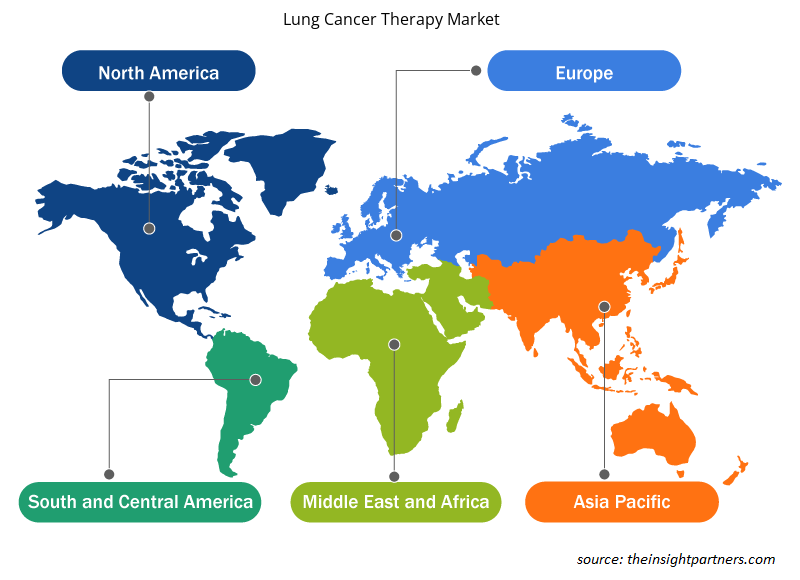[研究报告] 肺癌治疗市场预计将从 2022 年的 310.1832 亿美元增长到 2030 年的 804.9384 亿美元;预计 2022 年至 2030 年的复合年增长率为 12.7%。
市场洞察和分析师观点:
随着肺癌病例的增加以及英国、德国、美国和印度等国家吸烟和烟草消费习惯的增加,肺癌治疗市场规模正在扩大。在英国,每年约有 48,000 人被诊断出患有肺癌,约有 35,000 人死于肺癌。吸烟是肺癌最常见的原因,而其他原因包括被动吸烟和接触某些气体和化学物质。目前,德国每四个男性(约 27.0%)和五分之一的女性(约 21%)都经常吸烟。目前肺癌治疗的前景光明,有多种药物获批、丰富的产品线和许多正在进行的临床试验。多种肺癌疗法正处于临床开发的不同阶段;制药巨头正在努力扩大其产品线,这是肺癌治疗市场的一个重大机遇
增长动力和挑战:
肺癌是全球主要死亡原因之一。如果及早诊断,这种癌症可以得到更有效的治疗。因此,患肺癌风险高的人需要接受常规检查,以检测肺部是否形成癌变。在全球范围内,肺癌是男性中最常见的癌症,也是女性中第二常见的癌症。根据世界卫生组织 (WHO) 的数据,肺癌是全球男性和女性癌症相关死亡的主要原因。根据世界癌症研究基金会国际数据,2020 年全球新增肺癌病例约 220 万例。
根据美国癌症协会对美国肺癌的估计,2023 年可能会登记约 238,340 例新的肺癌病例,其中包括 120,790 名女性和 117,550 名男性。此外,根据美国国家生物技术信息中心 (NCBI) 的数据,意大利每年记录约 41,000 例新的肺癌诊断和约 34,000 例死亡病例。根据澳大利亚癌症协会 2023 年的报告,2022 年诊断出约 14,529 例新的肺癌病例,其中包括 7,707 名男性和 6,822 名女性。近 9% 的新癌症病例是在 2022 年诊断出来的,估计有 8,664 人死亡。土耳其卫生部提供的数据显示,土耳其每年约有 23,000 名男性和约 4,500 名女性被诊断出患有肺癌。因此,全球肺癌发病率的上升促进了肺癌治疗的研究和开发活动,进而推动了市场的增长。
自 1995 年以来,由于生物制剂在肿瘤学中的应用,新型抗癌药物的价格显著上涨。在美国,治疗癌症的每月费用约为 10 万美元。抗癌药物价格是该国最高的;这些药物比欧洲的药物贵两倍多,比世界其他地区的药物贵两到六倍。以下是一些国家肺癌治疗的费用:
|
国家
|
治疗费用范围
|
|
印度 |
100,000–2,00,000 印度卢比(1,203.01–2,406.02 美元) |
|
我们 |
25,000 美元至 50,000 美元 |
|
尼日利亚 |
5,540,000–9,000,000 奈拉(721.56–1,172.2 美元) |
|
肯尼亚 |
100,000–300,000 肯尼亚先令 (668.22–2,004.66 美元) |
|
加纳 |
80,000–2,00,000 加纳塞地(6,823.44–17,058.6 美元) |
|
火鸡 |
180,000–22,000 里拉(6,512–7,959.12 美元) |
|
德国 |
18,000–25,000 欧元(19,046.5–26,453.5 美元) |
许多抗癌药物的月费用大大超过大多数家庭的收入。因此,研究人员面临着巨大的压力,需要限制成本并证明其价值。许多国家的政治不确定性和持续的经济压力引发了人们对公共医疗资金可持续性的担忧。在较不富裕的国家,缺乏具有成本效益的药物影响了人口的健康状况,导致平均预期寿命较低。在没有全民医疗保健和医疗保险提供者的国家,患者必须自掏腰包支付治疗费用。与药物相关的高成本限制了肿瘤药物制造商的收入,因为这些药物只能提供给富裕人群和拥有有效保险覆盖的人。因此,药物和手术的高成本阻碍了肺癌治疗市场的增长。
定制此报告以满足您的需求
您可以免费定制任何报告,包括本报告的部分内容、国家级分析、Excel 数据包,以及为初创企业和大学提供优惠和折扣
-
获取此报告的关键市场趋势。这个免费样品将包括数据分析,从市场趋势到估计和预测。
报告细分和范围:
肺癌治疗市场根据治疗类型、适应症、最终用户和地理位置进行划分。按疫苗类型,肺癌治疗市场分为无创和微创。微创部分进一步分为射频消融、微波消融、热消融、冷冻消融、化学消融、光动力消融等。按适应症,肺癌治疗市场分为非小细胞肺癌和小细胞肺癌。按最终用户,市场分为医院、肿瘤诊所、研究中心等。根据地域划分,肺癌治疗市场分为北美(美国、加拿大和墨西哥)、欧洲(英国、德国、法国、意大利、西班牙、俄罗斯和欧洲其他地区)、亚太地区(中国、日本、印度、韩国、澳大利亚、东南亚和亚太其他地区)、中东和非洲(阿联酋、沙特阿拉伯、南非和中东和非洲其他地区)以及南美洲和中美洲(巴西、阿根廷和南美洲和中美洲其他地区)。
节段分析:
根据疫苗类型,肺癌治疗市场分为非侵入性和微创性。微创部分进一步分为射频消融、微波消融、热消融、冷冻消融、化学消融、光动力消融等。2022 年,非侵入性治疗部分占据了更大的市场份额。微创部分预计将在 2022-2030 年期间录得更高的复合年增长率。放射治疗、化学治疗和靶向治疗是主要的非侵入性肺癌治疗方法。放射肺癌治疗使用高能和强大的 X 射线来消除癌细胞,控制其生长并阻止其在肺部内扩散。放射治疗用于手术前后,以在手术前缩小肿瘤并杀死手术后持续存在的癌细胞。在化疗中,药物用于杀死肺部新的或现有的癌细胞。化疗被认为是肺癌的重要治疗方法。根据 2023 年发表的《化疗统计》一文,大约 2% 的 1 期和 2 期患者、9% 的 3 期患者和 27% 的 4 期患者分别接受化疗来治疗肺癌。
微创部分进一步细分为射频消融、微波消融、热消融、冷冻消融、化学消融、光动力消融等。光动力消融是一种未被充分利用的疗法,通过产生活性氧来选择性破坏癌细胞。这种疗法已在临床和体外环境中得到广泛研究。已经开展了各种研究来检查光动力消融疗法与纳米粒子联合用于肺癌患者的疗效。
射频消融 (RFA) 是针对癌症患者(包括无法手术的 NSCLC 患者)的最新且最有前景的治疗方法。RFA 具有很高的可行性和安全性,可以利用热的生物效应对肿瘤造成不可逆损伤或凝固性坏死。近年来,越来越多的医院开始选择 RFA 而不是立体定向放射治疗 (SBRT) 作为早期诊断的 NSCLC 的非手术治疗选择。因此,光动力消融治疗研究活动的增加和对射频消融治疗的日益偏好正在推动肺癌治疗市场在 RFA 领域的增长。微波消融技术使用细针将微波传输到肝肿瘤中,以热量摧毁癌细胞。
化学消融术是将化学混合物注入静脉,然后使用超声成像进行观察的技术。从无水乙醇和冰醋酸到表霉素等不同药物的应用和组合已在临床上进行了长期测试。
区域分析:
根据地域,肺癌治疗市场分为北美、欧洲、亚太地区、中东和非洲以及南美和中美洲。北美是全球肺癌治疗市场增长的最大贡献者。预计亚太地区在 2022-2030 年期间的肺癌治疗市场复合年增长率最高。美国肺癌治疗市场的增长主要受到肺癌病例发病率增加、产品推出和政府举措的推动。肺癌是美国第二大常见癌症。根据美国癌症协会的数据,截至 2023 年,美国约有 238,340 名成年人(117,550 名男性和 120,790 名女性)被诊断出患有肺癌;此外,约有 127,070 人(67,160 名男性和 59,910 名女性)死于该疾病。肺癌占所有癌症死亡人数的五分之一,是美国癌症死亡的主要原因。根据同一来源,NSCLC 占所有肺癌诊断的 81%。因此,美国肺癌发病率的上升推动了美国肺癌治疗市场的增长。
公司推出的各种治疗肺癌的产品也促进了市场的增长。2021 年 5 月,美国 FDA 批准 Lumakras (sotorasib) 作为首个针对成人非小细胞肺癌患者的靶向疗法。这是首个获批用于 KRAS 突变肿瘤的靶向疗法,该突变占非小细胞肺癌 (NSCLC) 病例报告突变的约 25%。2021 年 5 月,美国 FDA 加速批准 Rybrevant (amivantamab-vmjw),这是一种针对表皮生长因子 (EGF) 和 MET 受体的双特异性抗体,用于治疗包含 EGFR 外显子 20 插入突变的局部晚期或转移性 NSCLC 成人患者。
肺癌治疗市场区域洞察
Insight Partners 的分析师已详细解释了整个预测期内影响肺癌治疗市场的区域趋势和因素。本节还讨论了北美、欧洲、亚太地区、中东和非洲以及南美和中美洲的肺癌治疗市场细分和地理位置。

- 获取肺癌治疗市场的区域特定数据
肺癌治疗市场报告范围
| 报告属性 | 细节 |
|---|---|
| 2022 年市场规模 | 310.2亿美元 |
| 2030 年市场规模 | 804.9亿美元 |
| 全球复合年增长率(2022 - 2030 年) | 12.7% |
| 史料 | 2020-2021 |
| 预测期 | 2023-2030 |
| 涵盖的领域 |
按治疗类型
|
| 覆盖地区和国家 |
北美
|
| 市场领导者和主要公司简介 |
|
市场参与者密度:了解其对商业动态的影响
肺癌治疗市场正在快速增长,这得益于终端用户需求的不断增长,而这些需求又源于消费者偏好的不断变化、技术进步以及对产品优势的认识不断提高等因素。随着需求的增加,企业正在扩大其产品范围,进行创新以满足消费者的需求,并利用新兴趋势,从而进一步推动市场增长。
市场参与者密度是指在特定市场或行业内运营的企业或公司的分布情况。它表明相对于给定市场空间的规模或总市场价值,有多少竞争对手(市场参与者)存在于该市场空间中。
在肺癌治疗市场运营的主要公司有:
- 美敦力公司
- RF医疗有限公司
- 强生公司
- 默克公司
- 太阳制药工业有限公司
免责声明:上面列出的公司没有按照任何特定顺序排列。

- 了解肺癌治疗市场主要参与者概况
行业发展和未来机遇:
以下列出了肺癌治疗市场主要参与者的各种举措:
- 2023年10月,强生公司提交了II类扩展适应症申请,寻求欧洲药品管理局(EMA)批准RYBREVANT(amivantamab)联合化疗(卡铂和培美曲塞)用于一线治疗患有活化表皮生长因子受体(EGFR)外显子20插入突变的晚期非小细胞肺癌(NSCLC)成年患者。
- 2022年12月,RF医疗有限公司宣布,FDA批准其专利的MYGEN M-3004发生器和MYOBLATE射频消融系统在美国进行商业化。这些设备用于治疗受损的肿瘤和组织。
- 2021年5月,强生旗下杨森制药公司宣布,美国FDA加速批准RYBREVANTTM(amivantamab-vmjw)用于治疗EGFR外显子20插入突变的局部晚期或转移性非小细胞肺癌(NSCLC)成人患者。该药物适用于铂类化疗期间或之后病情进展的患者。RYBREVANTTM是首个获批用于治疗NSCLC患者的全人源双特异性抗体,靶向EGFR外显子20插入突变,这是第三大最常见的EGFR激活突变。
竞争格局和重点公司:
肺癌治疗市场中的一些知名企业包括美敦力公司、RF Medical Co Ltd、强生公司、默克公司、太阳制药工业有限公司、Bioventus Inc、明治制果制药有限公司、Advanz Pharma Corp 和奥林巴斯公司。这些公司专注于新产品的推出和地域扩张,以满足全球日益增长的消费者需求,并增加其专业产品组合中的产品范围。它们的全球影响力使它们能够服务于庞大的客户群,从而促进市场扩张。
- 历史分析(2 年)、基准年、预测(7 年)及复合年增长率
- PEST和SWOT分析
- 市场规模、价值/数量 - 全球、区域、国家
- 行业和竞争格局
- Excel 数据集
近期报告
相关报告
客户评价
购买理由
- 明智的决策
- 了解市场动态
- 竞争分析
- 客户洞察
- 市场预测
- 风险规避
- 战略规划
- 投资论证
- 识别新兴市场
- 优化营销策略
- 提升运营效率
- 顺应监管趋势























 获取免费样品 - 肺癌治疗市场
获取免费样品 - 肺癌治疗市场